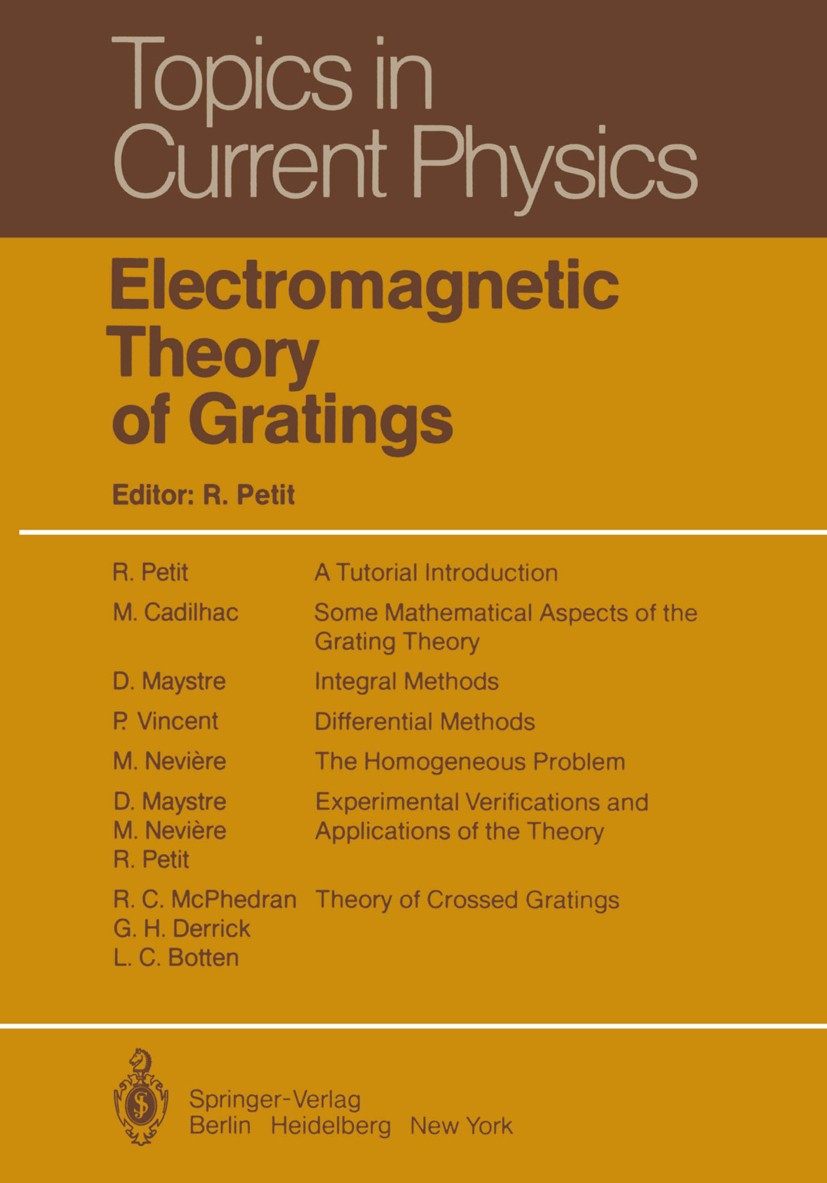| 书目名称 | Electromagnetic Theory of Gratings | | 编辑 | Roger Petit | | 视频video | http://file.papertrans.cn/307/306038/306038.mp4 | | 丛书名称 | Topics in Current Physics | | 图书封面 |  | | 描述 | When I was a student, in the early fifties, the properties of gratings were generally explained according to the scalar theory of optics. The grating formula (which pre dicts the diffraction angles for a given angle of incidence) was established, exper imentally verified, and intensively used as a source for textbook problems. Indeed those grating properties, we can call optical properties, were taught‘in a satisfac tory manner and the students were able to clearly understand the diffraction and dispersion of light by gratings. On the other hand, little was said about the "energy properties", i. e. , about the prediction of efficiencies. Of course, the existence of the blaze effect was pointed out, but very frequently nothing else was taught about the efficiency curves. At most a good student had to know that, for an eche lette grating, the efficiency in a given order can approach unity insofar as the diffracted wave vector can be deduced from the incident one by a specular reflexion on the large facet. Actually this rule of thumb was generally sufficient to make good use of the optical gratings available about thirty years ago. Thanks to the spectacular improvements in grating | | 出版日期 | Book 1980 | | 关键词 | Gitter (Optik); diffraction; dispersion; electromagnetic; electromagnetism; energy; optics; wave | | 版次 | 1 | | doi | https://doi.org/10.1007/978-3-642-81500-3 | | isbn_softcover | 978-3-642-81502-7 | | isbn_ebook | 978-3-642-81500-3Series ISSN 0342-6793 | | issn_series | 0342-6793 | | copyright | Springer-Verlag Berlin Heidelberg 1980 |
The information of publication is updating

|
|
 |Archiver|手机版|小黑屋|
派博传思国际
( 京公网安备110108008328)
GMT+8, 2025-11-14 13:07
|Archiver|手机版|小黑屋|
派博传思国际
( 京公网安备110108008328)
GMT+8, 2025-11-14 13:07


